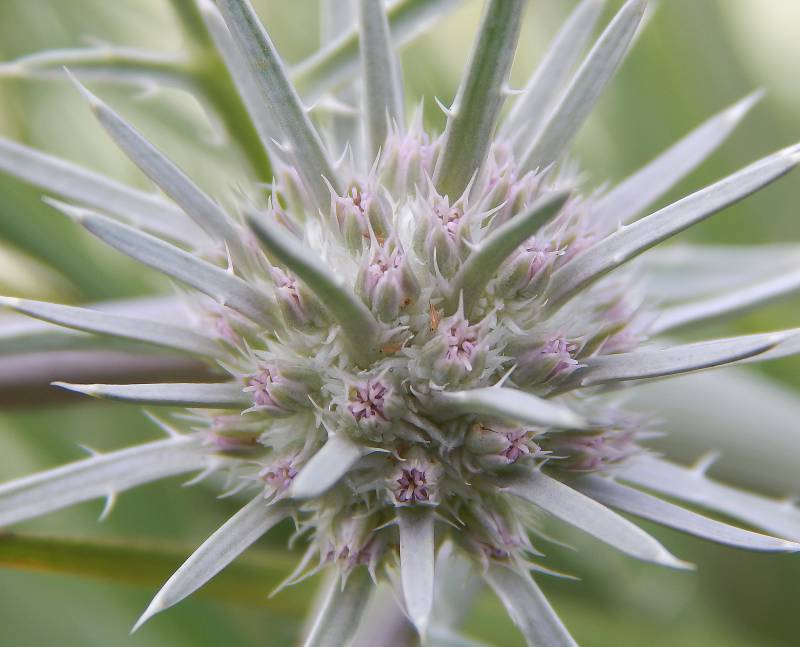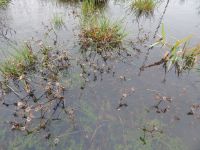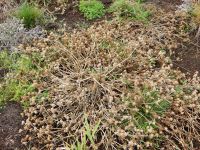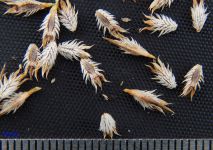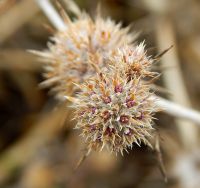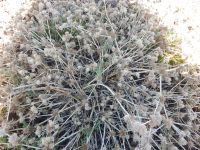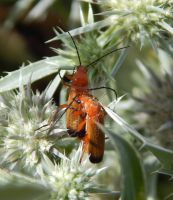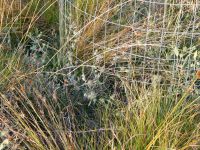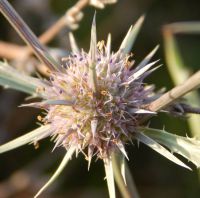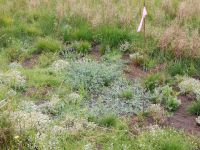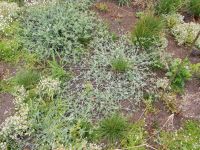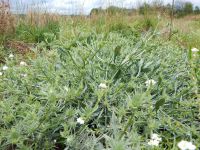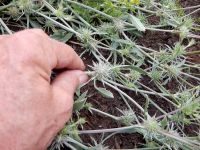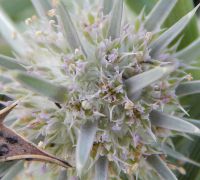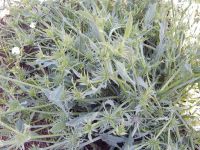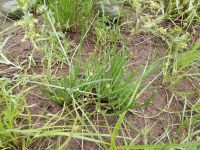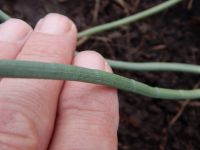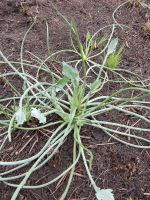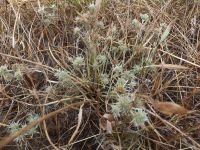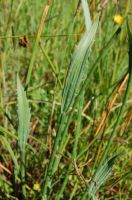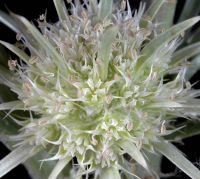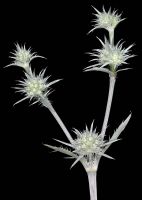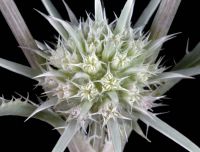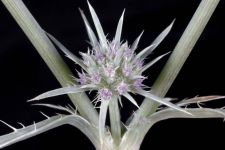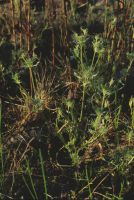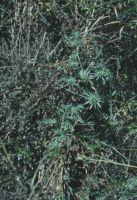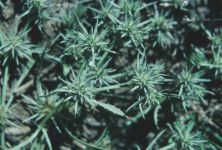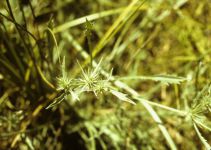Distribution: Occurring west of the Cascades crest in southwestern Washington and in the Columbia River Gorge; southern Washington through the Willamette Valley to southwestern Oregon.
Habitat: Low ground, especially in places submerged in spring and drying out in summer.
Flowers: June-August
Origin: Native
Growth Duration: Perennial
Conservation Status: Threatened in Washington (WANHP)
Pollination: Bees, flies, butterflies, wasps
Herbaceous perennial from fibrous roots and a short, simple crown, the stems 1.5-5 dm. tall, divaricately branched, often from near the base.
Basal leaves without blades, the petioles elongate, hollow; cauline leaves with progressively shorter petioles, the blades narrowly elliptic, up to 1 cm. wide, sub-entire or with spiny teeth.
Flowers sessile in heads up to 1 cm. wide; involucral bracts narrow, spine-toothed, much surpassing the flowers; bracteoles subtending the flowers narrowly linear, also exceeding the flowers; calyx lobes 5, 3 mm. long, acuminate; corolla 5-lobed, white.
Fruit ovoid, 2 mm. long, covered with tapering scales 1-1.5 mm. long.
Publication: Fl. Bor.-Amer. (Hooker) 1(5): 259. 1832.
PNW Herbaria: Specimen records of Eryngium petiolatum in the Consortium of Pacific Northwest Herbaria database.
WA Flora Checklist: Eryngium petiolatum checklist entry.
OregonFlora: Eryngium petiolatum information.
E-Flora BC: Eryngium petiolatum atlas page.
CalPhotos: Eryngium petiolatum photos.
USDA Plants: Eryngium petiolatum information.

